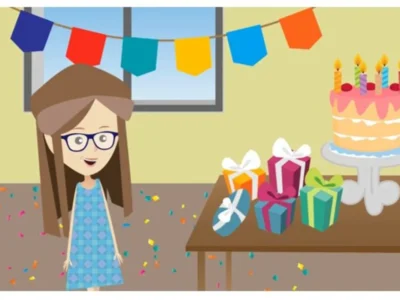In this post, clinical health psychologist and neuropsychologist Raquel Hernández Becerra explains the problem faced by girls diagnosed with autism spectrum disorder (ASD) level 1.
Throughout my professional career, I have observed how difficult it is for many psychology professionals to arrive at a diagnosis of autism spectrum disorder (ASD) when the child presents with level 1 autism. But if the child is a girl who presents level 1 autistic symptomatology, the invisibility is almost total unless you are an expert on the subject. Therefore, the families of these girls go through endless journeys with different professionals within the healthcare system, receiving different incorrect diagnoses or, simply, a response of “there is nothing wrong with her.”
Autistic symptomatology in females
When we talk about autism, we usually have the image of a boy before that of a girl, since there is a majority of males diagnosed with autism compared to females, because autistic symptoms are much more evident in them than in females. When we talk about autistic symptoms, we must bear in mind that there must be difficulties in social skills, communication, and restricted interests and/or repetitive or stereotyped movements. Various studies have clearly shown the differences in autistic symptomatology, within level 1, between females and males.
Social skills
Girls and women with autism know how to use social gestures and the social smile better, and are more effective at establishing social relationships with their peers compared to males with ASD, since the interests and play topics of girls with autism resemble those of typically developing girls. This social mimicry makes their disorder much more invisible compared to the social behavior of boys with autism, whose play is more solitary, repetitive and peculiar than that of their typically developing male peers.
Similarly, some studies have observed that empathy and understanding of friendship relationships in girls with autism are deficient when compared to typically developing girls, although they do resemble those of typically developing males. In fact, it has been documented that girls and adolescents with autism maintain greater social motivation and greater intimacy in their social relationships than males with autism.
Communication
It has been shown that girls, adolescents and women with autism, when compared with their typically developing female peers, are similar in acquiring expressive and receptive vocabulary. There is also similarity between them in expressing emotions.
However, deficiencies in the pragmatics and semantics of language are observed, which cause them to fail in social situations where the communicative message is important, that is, the use of pauses, word choice, metaphors, idioms… Therefore, women with autism, when seeking communicative strategies that allow them to compensate for their deficits, use imitation and lack of response, which generates misunderstandings in the message recipient and, consequently, leads to a negative social interaction.
There is also evidence that females with autism can describe internal processes linked to physiological sensations through language better and more frequently than males with autism.
Restricted interests and/or repetitive or stereotyped movements
In most cases, girls with autism present interests that involve greater acceptance by society, since they are more common among their typically developing female peers. These include, for example, fashion, celebrities or sports.
In any case, some studies have revealed that the most common interests in females with autism belong to two categories: television (movies, TV series, YouTube videos…) and psychology (role-playing, imagination, relationships…).
However, already in adolescence, in typical development, interests usually broaden extensively, which does not happen equally in adolescents with autism. The difference lies in that these girls tend to remain focused on the same interest and have difficulty opening up to new interests, which leads to adolescents with ASD being considered childish and this generating social failure.
Still, various studies have shown that girls and adolescents with autism mostly present fewer restricted interests and repetitive movements than males with autism, which leads to fewer diagnoses of females with autism.
Another difference compared to males with autism has also been observed. While girls with ASD show restricted interests mainly related to animals or people, boys focus mainly on objects such as, for example, vehicles.

Subscribe
to our
Newsletter
Comorbidity in girls and adolescents with autism
There is a wide variety of studies showing that, although women with autism tend to present less comorbidity compared to males with autism, when such comorbidity is present, it tends to be internalizing disorders such as depression, anxiety, sleep problems or somatic symptoms. However, males commonly present externalizing behaviors, so comorbidity with attention-deficit/hyperactivity disorder (ADHD) or conduct problems is often observed.
What should we look for to raise an alert of possible ASD in females?
There are two types of profiles we should observe:
- Externalizing: They seem sociable because they usually talk non-stop and tend to have people around them. However, if you observe the quality of the social interaction, you will notice pragmatic and semantic deficiencies.
- Internalizing: Quieter, shyer girls whose interests focus mainly on individual activities, such as painting or reading, for example. This type of profile is often confused with attention deficit.
We can also observe the following symptoms at different developmental stages:
- Preschool and school stage:
- Symbolic play: They may play with miniatures and dolls, although if you observe their play you will perceive that it is not very imaginative or creative, tending instead to be somewhat repetitive.
- ‘Guide’ classmates: Girls with autism often seek out girls who help them understand the different social situations that arise, becoming their behavioral model to imitate.
- Inflexibility: They may have a great interest in school materials, taking great care of them and not allowing their classmates to use them. They may even have a tantrum if they have lost an eraser or a pencil sharpener.
- Restricted or repetitive interests: These can be observed in activities such as drawing, collecting objects (stuffed animals, dolls, hair ties…). The difference between these activities and those of their typically developing peers lies in the intensity with which they carry out these activities.
- Adolescence and young adulthood: They may present perfectionist behavior and an increased presence of social difficulties, since the complexity of social messages and the importance of pragmatics at this age cause them to feel overwhelmed and make it harder for them to mimic their peers. Here, mild self-harming behaviors may appear (pulling out hair, biting lips…) or symptoms of depression and anxiety or sleep problems may be present, since they feel they struggle to fit in with others and end up blocked by a lack of tools to manage everything.
Early detection
Given all this, it is essential to increase knowledge of the autistic profile in girls, adolescents and women, as it allows early detection of the disorder to provide girls, as soon as possible, with social and communicative tools.
In my professional experience, in most cases, when I have made late diagnoses in adolescence and, after the appropriate intervention, the adolescent has learned that she has ASD, they often feel relieved to feel that, finally, they can understand themselves, identify their deficits and act on them.
Bibliography
- Romo Pluma, R. y Hernández Arteaga, E. (2023). Autism spectrum disorder in women: An area needing research in education. INTEGRA2 Revista Electrónica de Educación Especial y Familia, 14(2), 60-73.
- Cedano, Y. M., Rivera-Caquías, N., Alvarez-Alvarez, M. y Vega-Carrero, M. (2024). Autism Spectrum Disorder in Females. Revista Puertorriqueña de Psicología, 25(1), 1-22.
- Pérez Estrada, K. A. (2023). Unique perspectives: the autistic spectrum in women. Revista Digital Universitaria, 24(6), 1-12.
- Montagut Asunción, M., Mas Romero, R. M., Fernández Andrés, M. I. y Pastor Cerezuela, G. (2018). Influence of gender bias in the diagnosis of autism spectrum disorder: a review. Psychosocial Intervention, 27(1), 42-54.
If you liked this article about the invisibility of autism in girls, adolescents and women, you will likely be interested in these NeuronUP articles:
“This article has been translated. Link to the original article in Spanish:”
La invisibilidad del autismo en niñas, adolescentes y mujeres







 Lewy Body Disease
Lewy Body Disease
Leave a Reply